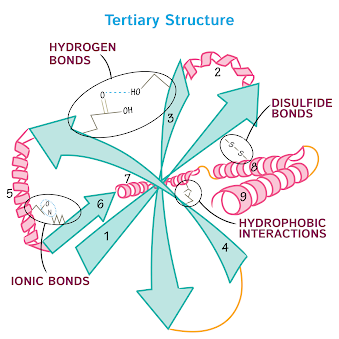Overview of Protein Structure
Protein structure refers to the three-dimensional arrangement of atoms in a protein molecule. Proteins are large, complex molecules made up of long chains of amino acids, which are the building blocks of proteins. The sequence of amino acids in a protein chain is determined by the genetic code.
Protein structure is hierarchical, meaning it can be described at different levels:
- Primary Structure: This level refers to the linear sequence of amino acids in the protein chain. The sequence is dictated by the genetic information encoded in the DNA. Each amino acid in the chain is linked to the next by peptide bonds.
- Secondary Structure: Secondary structure refers to the local folding patterns that occur within segments of the protein chain. The two most common types of secondary structure are alpha helices and beta sheets. In an alpha helix, the protein chain coils into a spiral shape stabilized by hydrogen bonds between nearby amino acids. In beta sheets, the protein chain forms a sheet-like structure where adjacent strands are held together by hydrogen bonds.
- Tertiary Structure: Tertiary structure refers to the overall three-dimensional shape of a single protein molecule. It is determined by interactions between amino acid side chains, including hydrogen bonds, disulfide bonds, hydrophobic interactions, and electrostatic interactions. Tertiary structure is crucial for the protein's function, as it dictates how the protein interacts with other molecules.
- Quaternary Structure: Quaternary structure refers to the arrangement of multiple protein subunits (polypeptide chains) in a multi-subunit protein complex. Not all proteins have quaternary structure; it is only applicable to proteins composed of multiple subunits. Examples include hemoglobin, which consists of four subunits, and enzymes with multiple subunits working together.
The structure of a protein is intimately linked to its function. Proteins fold into specific three-dimensional shapes that enable them to carry out their biological roles, such as catalyzing biochemical reactions, providing structural support to cells and tissues, transporting molecules within the body, and serving as signaling molecules. Any disruption in protein structure, such as misfolding or denaturation, can impair its function and lead to diseases or disorders. Therefore, understanding protein structure is essential for unraveling the molecular mechanisms underlying biological processes and developing therapeutics for various diseases.





.jpg)


No comments:
Post a Comment